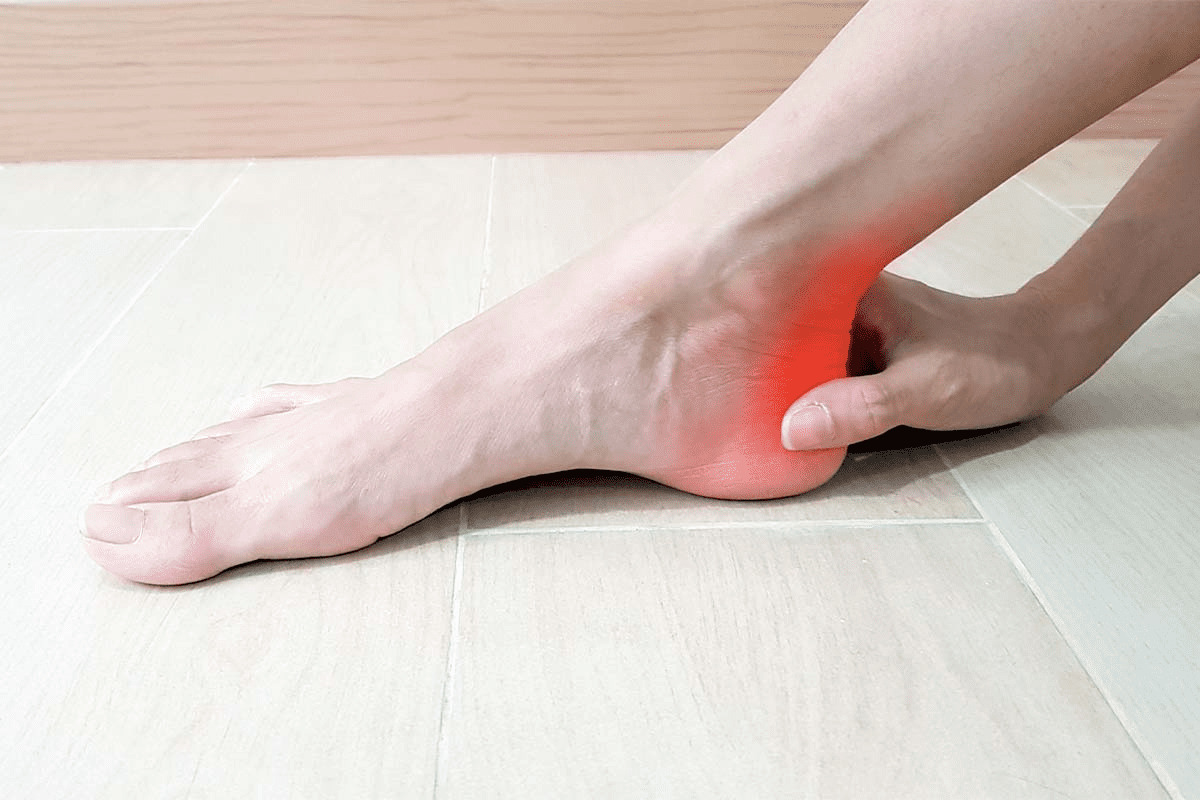Last Updated on November 26, 2025 by Bilal Hasdemir

At Liv Hospital, we get it. You might be worried about epidural steroid injections for herniated discs pain. These injections are a safe, non-invasive way to cut down on inflammation and pain. But, you might be thinking, how often can you get them?
Most doctors agree that you shouldn’t get more than three to four steroid shots a year for disc herniation. We focus on your needs, following international standards. This way, we make sure you get relief without risking your health.
How often can you get an epidural injection for disc prolapse? Get the expert guidelines on safe frequency for this procedure.
Key Takeaways
- Epidural steroid injections are a common nonsurgical intervention for herniated discs.
- The frequency of injections is a concern for long-term relief and safety.
- Clinical guidelines recommend up to three to four steroid shots per year.
- Liv Hospital follows a patient-centered, evidence-based approach.
- Our care is tailored to international standards for optimal patient outcomes.
Understanding Herniated Discs and Their Impact

It’s important to know about herniated discs to find the right treatment. A herniated disc, also called a slipped disc, happens when the soft center leaks out. This can irritate nerves and cause symptoms.
What Happens When a Disc Herniates
A herniated disc puts pressure on nerves. This can cause inflammation, pain, and discomfort. The symptoms depend on where and how big the herniation is.
Common Symptoms and Their Severity
Symptoms of a herniated disc vary. You might feel localized pain, radiating pain, numbness, tingling, or weakness. The pain can be mild or very severe.
| Symptom | Description | Severity Level |
| Localized Pain | Pain confined to the area of the herniated disc | Mild to Severe |
| Radiating Pain | Pain that travels along the nerve pathway | Moderate to Debilitating |
| Numbness/Tingling | Sensation of numbness or tingling in the affected limb | Mild to Severe |
The Science Behind Epidural Injection for Disc Prolapse

It’s important to know how epidural steroid injections work for disc prolapse. These injections help manage pain from herniated discs. They do this by reducing inflammation around the nerves.
How Steroids Reduce Inflammation
Steroids in epidural injections act like cortisol, a hormone our bodies make. Cortisol fights inflammation. When steroids are given epidurally, they help reduce swelling and inflammation around the nerves.
This is key because it lessens the pressure on nerves. This pressure reduction leads to less pain and discomfort.
The steroids bind to receptors, which then downregulate the production of inflammatory cytokines. These cytokines cause inflammation. By cutting down their production, steroids reduce inflammation. This gives patients relief.
Types of Steroids Used in Epidural Injections
There are different steroids used in epidural injections, each with its own traits. The most common ones are triamcinolone, methylprednisolone, and dexamethasone. The choice depends on the patient’s history, the condition’s severity, and the doctor’s preference.
- Triamcinolone and methylprednisolone last longer, giving a stronger anti-inflammatory effect.
- Dexamethasone is used when quick action is needed.
Choosing the right steroid is a big decision for healthcare providers. They pick based on the patient’s needs and the steroid’s characteristics.
Different Types of Epidural Steroid Injections
Epidural steroid injections come in different forms, each suited for different needs. We choose the right method for each patient to ensure they get the best pain relief. This is key for those with herniated discs.
Interlaminar Epidural Injections
Interlaminar injections go between the vertebrae’s laminae into the epidural space. This is often used for lower back and leg pain from herniated discs. Steroids injected here help reduce inflammation and ease pain.
Transforaminal Epidural Injections
Transforaminal injections target the foramina, where nerves exit the vertebrae. This method delivers steroids directly to the nerve root. It offers significant pain relief for many patients.
Caudal Epidural Injections
Caudal injections go through the sacral hiatus at the sacrum’s lower end. It’s great for lower back and leg pain. It’s also seen as a safer option due to its simplicity and lower risk of complications.
Each injection type has its own benefits and uses. Our team carefully chooses the best one for each patient. This is based on their condition and medical history.
Recommended Frequency Guidelines for Epidural Steroid Injections
It’s important for both patients and doctors to know the right frequency for epidural steroid injections. These guidelines make sure the treatment is safe and works well for herniated discs.
Standard Clinical Recommendations
Doctors usually say to have no more than three to four injections a year. This rule helps avoid side effects and keeps the treatment effective. The exact number might change based on how well the patient responds and the condition being treated.
We stick to well-tested clinical protocols. These are made from lots of research and experience. They aim to balance the good and bad of epidural steroid injections.
Factors That Influence Injection Frequency
Several things can change how often you get epidural steroid injections. These include:
- Patient Response: How well the first injection works is key to deciding on future ones.
- Clinical Scenario: The seriousness of the herniated disc and the patient’s health can impact how often you need injections.
- Specific Condition Being Treated: Different problems might need different treatment plans.
The table below shows what affects injection frequency and what it means for treatment:
| Factor | Impact on Injection Frequency |
| Patient Response | If the patient gets better, you might not need injections as often. |
| Clinical Scenario | More serious cases might need injections more often at first. |
| Condition Being Treated | Long-term conditions might need ongoing injections, adjusted as needed. |
Doctors consider these factors and follow guidelines to customize treatments. This way, they can help patients get the most benefit with the least risk.
Time Intervals Between Injections: What Research Shows
Knowing the right time between epidural steroid injections is key for success and safety. The gap between shots can greatly affect how well the treatment works and the patient’s risk of side effects.
Minimum Waiting Periods Between Injections
Studies show that the time between epidural steroid injections can vary. It usually ranges from a few weeks to several months. The shortest wait is often 7-14 days, which helps the first shot work and lowers the risk of steroid side effects.
Clinical guidelines say that the next shot’s timing depends on how the patient reacted to the last one. This tailored approach aims to boost treatment benefits while cutting down on risks.
How to Determine When Another Injection Is Appropriate
Deciding if another shot is needed involves checking the patient’s pain, how well they can function, and their reaction to the last shot. Doctors and patients work together to figure out when to schedule the next shot.
They consider how bad the symptoms are, if there are any side effects, and the patient’s overall health. This careful evaluation helps doctors plan the best timing for epidural steroid injections for patients with herniated discs.
The aim is to find the right balance between easing pain and avoiding the risks of too many steroid shots. By knowing the best time intervals, doctors can create treatment plans that fit each patient’s needs.
Annual and Lifetime Limits for Steroid Shots for Herniated Discs
Knowing the limits on steroid shots is key for safe treatment of herniated discs. These injections are a common choice, but there are rules to follow. Healthcare providers aim to keep treatments safe and effective.
Why Annual Limits Are Recommended
Annual limits on steroid shots help avoid side effects from repeated use. These injections can affect the body systemically. Risks include osteoporosis, cataracts, and adrenal suppression. Medical groups like the American Society of Anesthesiologists advise on limiting injections to avoid these risks.
Usually, injections should be spaced 1-3 months apart, with a yearly cap of 3-4 shots. But, these are just guidelines. The exact advice can change based on the patient’s health, the steroid type, and the doctor’s opinion.
Is There a Lifetime Maximum?
While annual limits are set, a lifetime maximum for steroid shots is not clearly defined. Deciding to keep or stop injections depends on several factors. These include how well the treatment works, any side effects, and other treatment options.
Some research points to considering the total steroid dose when weighing risks and benefits. Yet, there’s no agreed-upon lifetime maximum dose or number of injections.
| Guideline | Recommendation |
| Minimum Interval Between Injections | 1-3 months |
| Maximum Injections Per Year | 3-4 |
| Lifetime Maximum | Not universally defined |
It’s vital for patients to talk to their healthcare provider about their specific situation. This way, they can understand the limits and recommendations for their treatment. Making informed decisions helps avoid risks from steroid shots.
Potential Risks of Frequent Epidural Steroid Injections
Epidural steroid injections can help with pain, but using them too often can cause problems. It’s important to know about both the immediate and long-term effects of these injections.
Short-Term Side Effects
Right after getting an epidural steroid injection, you might feel increased pain at the injection site. You could also feel temporary numbness or weakness and facial flushing. Some people might get insomnia or mood changes from the steroid. These issues usually go away by themselves.
Long-Term Complications from Repeated Injections
Getting epidural steroid injections over and over can cause serious problems. You might get osteoporosis or bone fractures because steroids can weaken bones. There’s also a chance of adrenal suppression, where your body makes less steroids naturally. Other risks include infection and nerve damage.
- Osteoporosis: Weakening of bones
- Adrenal suppression: Reduced natural steroid production
- Infection: Risk of introducing infection during the procedure
- Nerve damage: Possible damage to surrounding nerves
Systemic Effects of Steroids
The steroids in epidural injections can affect your whole body. They can change your blood sugar levels, cause weight gain, and lead to fluid retention. Long-term use might also cause cataract formation and glaucoma. It’s key to talk to your doctor about your health history to understand these risks.
Knowing the risks and side effects of frequent epidural steroid injections helps patients make better choices. It’s important to think about these risks and the benefits. Always talk to a healthcare professional about other treatment options.
Effectiveness of Epidural Injections for Herniated Discs
For those with herniated discs, knowing how well epidural steroid injections work is key. These injections can help a lot with pain, but how much they help can vary. It depends on the person.
We’ll look at what makes these injections work better for some and not as well for others. This will help us understand what to expect.
Short-Term Pain Relief Expectations
Epidural steroid injections can really help with pain in the short term. Many people see a big drop in pain within a few weeks after getting the shot.
The study published in PMC shows that the steroids’ anti-inflammatory effects are why people feel better at first.
Long-Term Outcomes and Success Rates
While feeling better in the short term is good, how well these injections work over time can vary. Things like how bad the herniation is, if there are other spinal problems, and the person’s health can affect how well they work in the long run.
To understand long-term results better, let’s look at some data:
| Study | Short-Term Success Rate | Long-Term Success Rate |
| Study A | 80% | 60% |
| Study B | 75% | 55% |
| Study C | 85% | 65% |
The table shows that while many people feel better right away, the relief doesn’t last as long for everyone. This means that for some, the injections might not work as well over time.
It’s important for patients to have realistic hopes and talk to their doctors about what to expect.
Key factors influencing long-term outcomes include:
- The severity of the herniated disc
- The presence of other spinal conditions
- The patient’s overall health and lifestyle
By knowing these factors and the data on short-term and long-term results, patients can make better choices about their treatment.
Special Considerations for Different Spinal Regions
We need to think carefully about the spinal area before doing epidural steroid injections. The spine has three main parts: cervical, thoracic, and lumbar. Each part has its own special features and challenges. Knowing these differences is key for safe and effective injections.
Cervical Epidural Injections
Cervical epidural injections help with neck problems. These injections are tricky because of the neck’s complex structure. They are close to important parts like the spinal cord and arteries.
Key considerations for cervical epidural injections include:
- Precise imaging guidance is essential to ensure accurate placement.
- The risk of complications, such as spinal cord injury, is higher in this region.
- Patient selection is critical, with a thorough assessment of the patient’s anatomy and condition.
Thoracic Epidural Injections
Thoracic epidural injections are less common but help with mid-back issues. The mid-back has a special curve that makes injections harder.
Important factors for thoracic epidural injections include:
- The steep angulation of the thoracic spine can make needle placement more challenging.
- Imaging guidance is critical to navigate the complex anatomy.
- Thoracic epidural injections may be used for conditions such as thoracic disc herniations or spinal stenosis.
Lumbar Epidural Injections
Lumbar epidural injections are very common for lower back pain. The lower back is easier to access than the upper or mid-back. This makes injections here more straightforward.
Considerations for lumbar epidural injections include:
| Factor | Description |
| Patient Positioning | Proper positioning is vital for a safe and comfortable injection. |
| Imaging Guidance | Fluoroscopy or other imaging helps place the needle correctly. |
| Anatomical Variations | Knowing each person’s unique anatomy is essential for success. |
It’s important to understand each spinal area’s unique needs for epidural steroid injections. By focusing on the specific challenges of cervical, thoracic, and lumbar injections, doctors can improve patient results.
Alternative Treatments for Herniated Discs
For those with herniated discs, looking into alternative treatments is key. These options can help manage symptoms and improve life quality. While epidural steroid injections are common, other methods can also offer relief and support recovery.
Conservative Non-Injection Approaches
Managing herniated discs without surgery is possible. Physical therapy is a mainstay, strengthening muscles and improving flexibility. It also helps reduce pain.
Chiropractic care and osteopathic manipulation are also helpful. They improve spinal alignment and ease pressure on the disc.
Pain management through medication is another important part. NSAIDs and other pain relievers can control pain and inflammation. Making lifestyle changes, like weight management and improved posture, also helps reduce spine strain.
Other Minimally Invasive Procedures
There are also minimally invasive procedures for herniated discs. Radiofrequency ablation uses heat to target and disable pain signals. Spinal decompression therapy gently stretches the spine to relieve disc pressure.
- Nucleoplasty: Shrinks disc material using radiofrequency energy.
- Intradiscal electrothermal therapy (IDET): Heats the disc to destroy pain-causing tissue.
When Surgery Might Be Necessary
In some cases, surgery is the best option. Surgical choices include discectomy and spinal fusion. These options are considered when other treatments don’t work well enough.
It’s vital for patients to talk with their healthcare provider about their treatment options. This helps find the best approach for their condition.
Conclusion: Making Informed Decisions About Epidural Steroid Injections
Epidural steroid injections can help those with herniated discs. It’s important to make smart choices about these injections for pain relief and health.
Patients should know the good and bad sides of these injections. Working with doctors helps find the right treatment for each person.
Thinking about how often and what kind of injections to get is key. Also, looking at other treatment options is important. We suggest asking lots of questions to understand all the choices.
Putting education first and teaming up with doctors makes the treatment journey easier. This way, people can get the best results for their health.
FAQ
What is a herniated disc, and how is it related to epidural steroid injections?
A herniated disc happens when the soft center of the disc leaks out. This is due to a tear in the outer disc. Epidural steroid injections are a common treatment. They help manage pain and inflammation from herniated discs.
How do epidural steroid injections work to alleviate herniated disc symptoms?
Epidural steroid injections put steroids near the spinal cord. This reduces swelling and irritation. It helps ease the pain caused by herniated discs.
What are the different types of epidural steroid injections, and when are they used?
There are interlaminar, transforaminal, and caudal epidural injections. The choice depends on the disc’s location and severity. It also depends on the patient’s overall health.
How often can you get epidural steroid injections for a herniated disc?
The frequency varies based on individual needs and guidelines. Usually, injections are spaced a few weeks apart. A maximum of three injections are allowed in a year.
What are the risks associated with frequent epidural steroid injections?
Risks include short-term side effects like increased pain or infection. Long-term risks include steroid-induced osteoporosis. Systemic effects like hormonal imbalances are also possible.
Are there alternative treatments for herniated discs beside epidural steroid injections?
Yes, there are other options. These include physical therapy and other minimally invasive procedures. Surgery may also be considered, depending on the severity and patient health.
How effective are epidural steroid injections for herniated discs in the short and long term?
Epidural steroid injections can offer significant short-term pain relief. Long-term results vary. Some patients may need more treatments for sustained relief.
Is there a lifetime limit for epidural steroid injections?
While there’s no strict lifetime limit, guidelines suggest limiting injections due to risks. The number of injections is decided on a case-by-case basis.
Can epidural steroid injections be used for herniated discs in any spinal region?
Yes, but the approach and considerations differ for cervical, thoracic, and lumbar regions. This is due to anatomical differences and risks.
What factors influence the decision to administer epidural steroid injections for a herniated disc?
Several factors are considered. These include symptom severity, herniation location and size, patient health, previous treatments, and any contraindications.
References
- Brotis, A. G., et al. (2025). Epidural steroid injections in lumbar disc herniation. Pain Physician, 28(2), 123-134.






